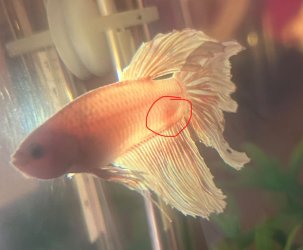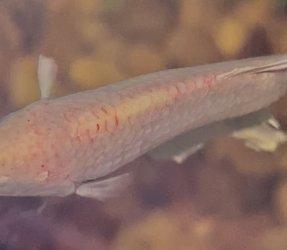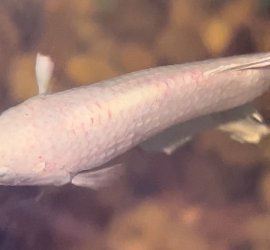SushiRollsAquabuds
New Member
Context : ever since I saved Angel from terrible conditions he has changed colors over time. i got him as a pale white betta and over time changed to a slight red color that are shown throughout his fins.
— Recently I have noticed that Angel has developed a red spot in his body .. I don’t know whether it is his coloring or something to be concerned about. This spot is seen on both sides of his body but more visibly on the right side. he is acting normal and seems to be fine and temperatures are good.
Currently Angel seems to be developing red scales on the top of his head as well but they are still coming in. I am assuming it is just from his coloration too.
I have pictures below for those who want to see
— Recently I have noticed that Angel has developed a red spot in his body .. I don’t know whether it is his coloring or something to be concerned about. This spot is seen on both sides of his body but more visibly on the right side. he is acting normal and seems to be fine and temperatures are good.
Currently Angel seems to be developing red scales on the top of his head as well but they are still coming in. I am assuming it is just from his coloration too.
I have pictures below for those who want to see






